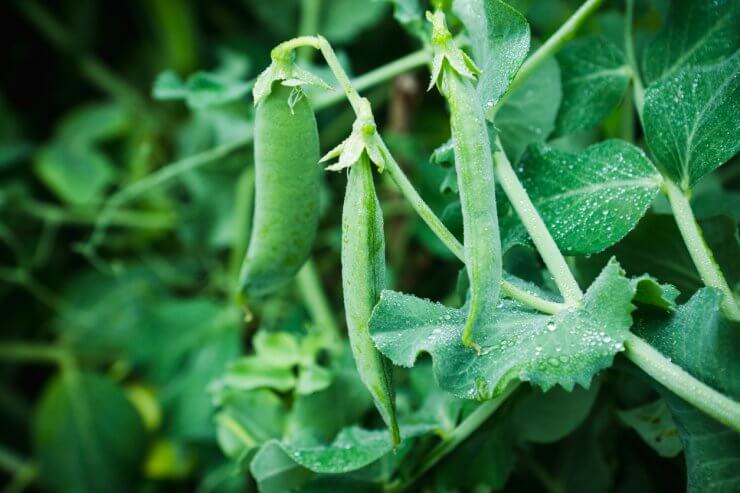
Pea plant
The three types of pea plants—English, snow, and sugar snap—are divided into two classifications: dwarf and tall.
Dwarf pea plants are bushy and grow to 15 to 30 inches. Dwarf varieties tend to produce their crop all at once, like a determinate tomato. Because they are short and bushy, many dwarf varieties don’t need support, making them good for container growing. Bush-type pea plants tend to produce sweeter peas, because plant breeders have focused their experiments on dwarf plants. Dwarf plants also mature faster than tall varieties, as a rule. If you plan to can or freeze much of your crop, all-at-once maturing can be useful. But if you hesitate and miss peak harvesting time, you’ll end up with a lot of peas that have passed their prime. (Don’t worry, you can still harvest and freeze them!)
Tall pea plants are indeterminate: they grow as vines, don’t top off, and continuously produce peas throughout the season, until the summer heat or fall frost kills the plants, or stops them from producing. Tall pea plants need support in the form of a fence, trellis, or poles. Because the vines are more spread out, it’s easier to pick the peas from tall plants. They will yield more per square foot, and they have a longer growing season.
You should decide what classification of pea plants best fits your space, harvesting goals, and gardening style.
Which class of pea plants do you grow—dwarf or tall? Please tell us why you’ve chosen your class of peas to grow.


 Previous
Previous


I garden Every year but haven’t grown peas. I love Fresh peas, and this article has remind me to put them on my list. Thank you!